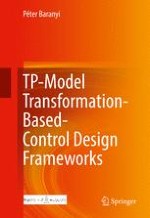2016 | OriginalPaper | Buchkapitel
2. Algorithms of the TP Model Transformation
verfasst von : Péter Baranyi
Erschienen in: TP-Model Transformation-Based-Control Design Frameworks
Aktivieren Sie unsere intelligente Suche, um passende Fachinhalte oder Patente zu finden.
Wählen Sie Textabschnitte aus um mit Künstlicher Intelligenz passenden Patente zu finden. powered by
Markieren Sie Textabschnitte, um KI-gestützt weitere passende Inhalte zu finden. powered by
